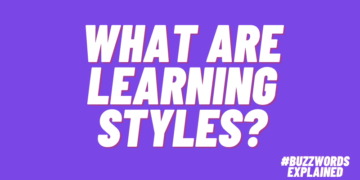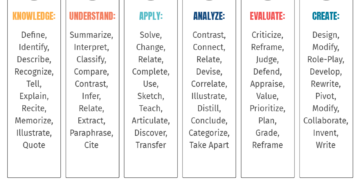Engage Students With Gamified, Personalized, And Flexible Learning
In recent years, Instructional Design has undergone significant changes as advancements in technology, such as Artificial Intelligence (AI), have revolutionized the way we approach education. Traditional instructional methods are giving way to new modalities and models that prioritize student engagement, personalization, flexibility, and gamification. Additionally, strategic partnerships are being formed to further benefit students. We will explore the future of Instructional Design, focusing on how gamified, personalized, and flexible learning, when thoughtfully integrated with AI and partnerships, can transform the educational landscape for students.
How To Leverage Gamified, Personalized, And Flexible Learning In Instructional Design
Gamified Learning: Making Education Fun And Engaging
One of the key elements of the future of Instructional Design is gamified learning. Gamification involves incorporating game design elements and principles into educational experiences, making learning more enjoyable and engaging for students. Gamified learning can take many forms, such as using game-based simulations, interactive virtual environments, or incorporating rewards, badges, and leaderboards to encourage students to complete tasks, achieve goals, and progress through their learning journey.
One of the benefits of gamified learning is that it taps into students’ natural inclination for competition, achievement, and play. Making education fun, gamification can increase student motivation and drive, leading to improved learning outcomes. Gamified learning also provides opportunities for students to practice problem-solving, critical thinking, and decision-making skills in a safe and controlled environment, allowing for experiential learning.
Personalized Learning: Tailoring Education To Individual Needs
Another important aspect of the future of Instructional Design is personalized learning. Personalized learning involves tailoring education to the unique needs, interests, and learning styles of individual students. This can be achieved through the use of data-driven analytics, adaptive learning technologies, and AI algorithms that can assess students’ strengths, weaknesses, and preferences, and deliver customized learning experiences accordingly.
Personalized learning allows students to learn at their own pace, receive targeted feedback, and access resources that match their individual needs. It promotes self-directed learning, autonomy, and ownership over one’s education, which can lead to increased motivation, engagement, and academic success. Personalized learning also recognizes the diversity of students’ backgrounds, abilities, and interests, and provides opportunities for inclusive and equitable education.
Flexible Learning: Adapting Education Τo Changing Contexts
Flexibility is another critical aspect of the future of Instructional Design. Flexible learning involves adapting education to changing contexts, such as students’ schedules, preferences, and environments. With the advancement of technology, students can access educational content and resources anytime, anywhere, and on any device, allowing for learning to take place beyond the traditional classroom setting.
Flexible learning can take various forms, such as blended learning (a combination of online and face-to-face instruction), flipped classrooms (where students learn content online before class and engage in activities during class), or mobile learning (using mobile devices for learning on the go). Flexible learning recognizes that students have different learning needs and preferences, and provides opportunities for them to choose how, when, and where they want to learn, promoting autonomy, self-regulation, and adaptability.
The future of Instructional Design is rooted in modalities and models that engage students through gamified, personalized, and flexible learning. Gamified learning makes education fun and engaging, personalized learning tailor education to individual needs, and flexible learning adapts education to changing contexts. Now, we will explore how the thoughtful integration of AI and strategic partnerships can further enhance these instructional approaches to benefit students.
Further Exploration Ιnto Τhe Future Οf Instructional Design With AI
As we continue to explore the future of Instructional Design, we delve into the role of Αrtificial Ιntelligence (AI) and how it can enhance gamified, personalized, and flexible learning. AI, with its ability to process data, analyze patterns, and make predictions, has the potential to revolutionize education by providing personalized insights, automating routine tasks, and creating adaptive learning experiences. However, it’s essential to use AI thoughtfully and ethically to ensure that it benefits students in a responsible and effective manner.
1. Personalized Insights: Leveraging AI To Understand And Support Students
One of the significant contributions of AI to Instructional Design is its ability to provide personalized insights into students’ learning behaviors, preferences, and progress. AI algorithms can analyze vast amounts of data, such as students’ interactions with educational content, assessments, and Learning Management Systems, to identify patterns and trends. These insights can then be used to understand each student’s strengths, weaknesses, and learning gaps, and tailor instruction accordingly.
For example, AI-powered learning analytics can generate real-time feedback for students, providing them with personalized recommendations for further study, practice, or revision. AI can also identify students who may be struggling and intervene early with additional support, such as adaptive tutoring or mentoring, to help them succeed. By leveraging AI for personalized insights, Instructional Designers can create learning experiences that are more effective, efficient, and targeted to individual student needs.
2. Automation Of Routine Tasks: Streamlining Instructional Design Processes
AI can also automate routine tasks in Instructional Design, freeing up educators’ time and resources to focus on more meaningful and creative aspects of teaching and learning. For instance, AI-powered content creation tools can automatically generate learning materials, assessments, and quizzes based on predefined learning objectives or standards. AI can also automate grading and feedback processes, reducing the burden on educators and providing students with timely and consistent feedback.
Additionally, AI can analyze learner data to identify patterns and trends, which can inform Instructional Design decisions. For example, AI can analyze data on student engagement, performance, and preferences to optimize learning pathways, adjust content delivery, and personalize learning experiences. Automation of routine tasks with AI can streamline the Instructional Design process, making it more efficient and scalable while maintaining quality and effectiveness.
3. Adaptive Learning Experiences: Creating Dynamic And Responsive Instruction
Another area where AI can have a significant impact on Instructional Design is in creating adaptive learning experiences. Adaptive learning involves dynamically adjusting instruction to meet the specific needs and progress of each learner. With AI, Instructional Designers can create learning experiences that adapt in real time, based on learners’ responses, behaviors, and performance data.
For example, AI algorithms can analyze learners’ interactions with educational content, such as how long they spend on each item, their responses, and their level of engagement, to dynamically adjust the difficulty level, pacing, or sequencing of the content. AI can also provide hints, explanations, or additional resources based on learners’ performance or areas of struggle. This allows for personalized and responsive instruction that caters to each learner’s unique needs, maximizing their learning outcomes.
4. Ethical Considerations: Thoughtful And Responsible Use Of AI
While AI offers promising opportunities for enhancing Instructional Design, it’s crucial to use it thoughtfully and responsibly. There are ethical considerations that need to be addressed, such as data privacy, algorithm bias, and transparency. Instructional Designers need to be mindful of the potential biases and limitations of AI algorithms and ensure that they are using diverse and representative data to train and test these algorithms. Additionally, it’s important to protect learners’ privacy and secure their data to maintain trust and confidentiality.
Furthermore, it’s essential to be transparent with learners about the use of AI in Instructional Design. Learners should be informed about how their data is being collected, analyzed, and used to personalize their learning experiences. They should also have the option to opt out or control the extent of data collection and usage.
In addition to ethical considerations, it’s important to ensure that AI is used as a tool to enhance human instruction, rather than replace it. While AI can automate routine tasks and provide personalized insights, the role of educators in facilitating meaningful interactions, building relationships, and providing mentorship cannot be understated. Instructional Designers should focus on designing learning experiences that strike a balance between AI-driven personalization and human-centered instruction.
5. Building Partnerships: Collaboration Between Educators, Instructional Designers, And AI Developers
Another crucial aspect of the future of Instructional Design is the collaboration and partnership between educators, Instructional Designers, and AI developers. Instructional Designers need to work closely with educators to understand their instructional goals, pedagogical approaches, and learner characteristics to design effective and engaging learning experiences. They also need to collaborate with AI developers to understand the capabilities and limitations of AI technologies and leverage them thoughtfully in Instructional Design.
Moreover, Instructional Designers can collaborate with other stakeholders, such as educational researchers, policymakers, and industry experts, to stay updated with the latest research, best practices, and emerging trends in the field of AI in education. Building such partnerships can foster innovation, promote the effective use of AI, and ultimately benefit students by creating engaging and personalized learning experiences.
Conclusion
The future of Instructional Design is planted in modalities and models that engage students through gamified, personalized, and flexible learning, and leverage AI thoughtfully. AI has the potential to provide personalized insights, automate routine tasks, and create adaptive learning experiences. However, it’s important to use AI responsibly and ethically and ensure that it enhances human instruction rather than replaces it. Collaboration and partnerships between educators, Instructional Designers, and AI developers are crucial to driving innovation and benefiting students. As we continue to navigate the ever-evolving landscape of Instructional Design, thoughtful integration of AI can greatly enhance the quality and effectiveness of learning experiences for students, preparing them for the future.




















